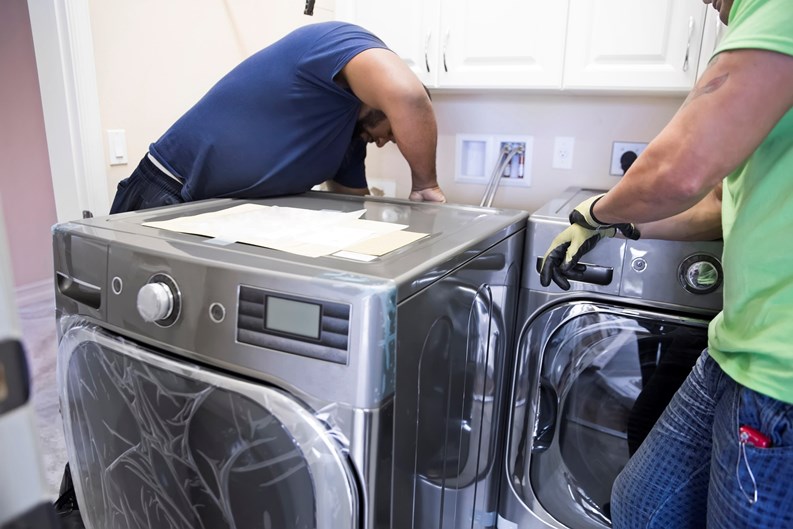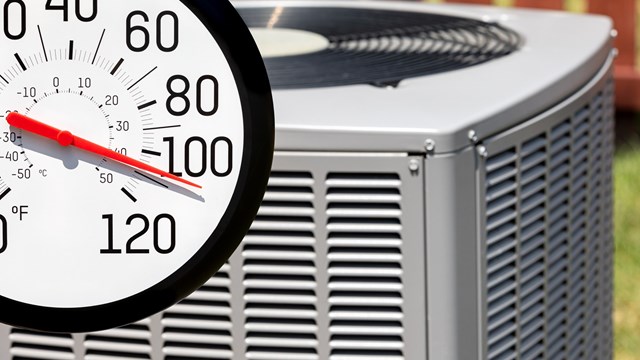Can you imagine living in a condo or co-op that doesn’t have a laundry room? These days, having on-site laundry facilities for residents isn’t an amenity – it’s a necessity, and keeping yours functional and well-maintained is just as important as keeping the boiler or elevators running.
Nearly all multifamily laundry rooms are managed and maintained by outside laundry contractors – they take care of the machines, service them when necessary, and collect the money from the machines.
“In the past, the machines were quite simple,” says Daniel Schwartz, vice president of Fowler Laundry Solutions in Union, New Jersey. “There were no computers, and everything was basically manual.”
No More Quarters
My, how times have changed! Recent years have seen a lot of improvement and innovation in how all these tasks are managed. Thanks to the advent of computerized washers and dryers, as well as internet-connected equipment and notification systems, the tedious search for quarters and traipsing back and forth to the basement to check the status of clothes is thankfully, a thing of the past.
Gone are the days of the “dank, old rooms in the basement next to the furnace,” says Scott Scarpato, president of Automatic Laundry Services Company Inc. in Newton, Massachusetts. “Our family has been in the laundry business all my life, and I’ve seen the transition from basement operations to above-ground facilities. Community laundry rooms now have amenities such as nice floors, good lighting, special folding areas, TVs and monitors.” In fact, community laundry as we know it has changed dramatically for residents of many condominiums.
“It’s no longer a coin business,” adds Barry Heller of Hercules Corp. in Hicksville, New York. “It’s all smartcards, a rechargeable card that residents keep in their wallet.”
Smartcards work much like a pre-paid debit card; residents load their desired value onto their laundry card, and then all they need to do is insert the card into the reader on the washing machine or dryer. If there is enough of money on the card, it signals the machine to start. If there isn’t enough money, residents have various options for adding value onto the card.
“Some laundry rooms have cash revaluing machines,” explains Heller. “Some have credit card revaluing machines. Some use the internet, where you can add money to your card from the comfort of your apartment.”
Smartcards also help to detect fraud.
“For a lot of managers, it’s become another way of detecting illegal activity,” says Stanley Marx, director of development at Aces Laundry Services LLC in Hartsdale, New York. “If there’s a name that keeps coming up and they don’t live in that building, it gives the landlord insight as to who is using their machines.”
In New York City, Schwartz explains that the card systems can also be linked to public assistance cards. “If you get assistance in New York City, your assistance card can be linked to the laundry room so you can use that money to pay for it.”
If a card is lost or stolen, it also makes it easier to replace. “If they lose their card, we also know exactly how much that card had on it and we send them a new one with the same amount of money that they had on it originally,” says Marx.
Laundry Room Tech
Smartphone apps have revolutionized many aspects of everyday life – and the laundry room is no exception. By simply downloading whichever app their building has chosen, residents can keep tabs on wash and drying cycles, without having to leave their apartment.
“If you live on the 31st floor, you can see on your phone that three washers are available, as opposed to traipsing all the way downstairs and finding out that every machine is being used,” says Heller. “So monitoring is an important advance.”
These apps have also helped the laundry companies when it comes time to service the machines. “We’re able to reboot machines from a distance,” says Marx. “A lot of things we can do on our own from the office, which means I’m not having to send a mechanic out every time there’s a call.”
Looking down the road, Marx sees app technology taking the laundry industry even further. “With the apps, the residents won’t even need to carry a card around,” he says. “They will just be able to wave their phone at the machine. I don’t think people are ready to accept that yet, but it’s definitely on the horizon. As far as the actual washability, I’ve heard about machines being developed that are going to [use] sound waves for cleaning, but I don’t see it in my lifetime.”
While cleaning your clothes using sound waves might still sound like something you saw on the futuristic cartoon The Jetsons, it’s important to note how far laundry machines have actually improved over the years.
“Many, many years ago there were the Bendix front-loading machines that were a headache and went out of style quickly,” says Marx. “Everybody then moved to a top-loading machine. Top loading machines used approximately 36 to 38 gallons of water each wash load. That’s usually two fill-ups, a wash, a rinse, and then a second rinse. You can set the newer machines for as little as 6 1/2 or 7 gallons of water for the entire wash cycle.”
This makes a big difference to the building’s bottom line in water savings. “It makes a big difference as far as economy to the building,” says Marx. “Also, the reduction of water has cut down on the amount of suds and drainage issues.”
Let’s Get This Laundry Room Started
The first step for buildings in need of a new or upgraded laundry room is to contact a laundry company for a site visit and a proposal.
“The first thing we do is see what the infrastructure looks like – such as the drainage and electrical – and how many apartments there are,” says Schwartz. “We also need to know the demographics of the building. If there are more families than seniors living there, the room is going to need more equipment.”
Schwartz also considers any renovation of the infrastructure that needs to be done, such as painting the room and adding lighting. “We take care of capital investment in the room,” he says.
“We take a lease interest,” Scarpato says. “We pay rent to the associations with long-term leases where we take care of all the upfront costs, so no money is spent on the part of the condominium community. Then we’re responsible for maintaining and servicing the machines and collecting the money, which relieves the association of additional costs and duties. We have a revenue sharing program where the association gets a percentage. The needs vary from property to property. So for each property, both sides have to come to an arrangement about the investment up front and the terms of agreement about how the revenue sharing will work.”
Once a contract is signed on the dotted line, the work has just begun. “It’s not the kind of thing where we put the machines in, then goodbye, so long, and good luck,” says Marx. “It doesn’t happen that way. We stay in constant contact with our agents. What’s going on? Are you happy? Are there any issues? They’ll say, “You know what? The room is starting to look a little tired.” We want the room to be bright, shiny, and safe. Toward the end of the lease, we’ll give them new equipment if it makes sense. In most cases, it does.”
“The building gets a fixed monthly rental payment from a laundry company, but typically they don’t care whether they make money off of this, believe it or not,” says Heller. “They look at it as an amenity that they are providing to the residents of the building, as opposed to a profit center.”
Sometimes the owner (or board, in the case of a co-op or condo) would rather collect the money and pay the laundry company, which is an option too. “We’ll rent the equipment and receive a flat monthly rental fee,” says Schwartz. “But if they want to purchase the equipment from us, we can do that too, and set up a service contract for the equipment.”
Out of Order
Of course, at some point, a machine is going to break down, and as long as the contract is in effect, it’s the laundry company’s responsibility to service them.
“We take care of cleaning the machines, and servicing them is included for the duration of the lease,” says Heller. “What we expect of the building is for the super or the resident manager to keep the room clean and inviting for the residents.”
Heller stresses that all the technology and machine advancements in the world don’t matter if the service isn’t up to par. “If a property manager is getting calls from customers at all hours of the day and night saying that half the washers or dryers are down, and a good laundry company is not fixing them not servicing them, then what good is all the technology? If machines are not working or the machines are not serviced on time, then technology is totally meaningless,” he says. That’s why it’s important for managers and board members to keep tabs on their community’s laundry facilities, respond quickly to residents’ reports of malfunctioning equipment, and make sure that the building’s support staff stay on top of basic maintenance, such as sweeping up lint and other floor debris, replacing flickering light bulbs, and making sure the space is clean, comfortable, and safe for anyone using it.
Renegotiation
Before the contract is up, the laundry company and the manager will meet to renegotiate the terms of renewal – if indeed renewal is the goal. It’s at this time that the building can express their concerns and ask for new items in the contract.
“They may sit with the management company and discuss the machines and an extension to the duration of the contract,” says Heller. “Maybe some amenities need to be changed out in the room based on the amount of years. Maybe the tables, maybe the chairs, maybe the walls need to be repainted, things like that are all negotiated.”
Renegotiation also includes new machines. “It depends on the age of the equipment,” says Schwartz. “Also, if they want new technologies, such as remote notification, alternate payment systems or new items like new carts, etc. this will be discussed and added into the financials.”
Of course, a building might just want a bigger cut of the profits. “Sometimes their expenses go up in the laundry room and they want to cover their costs and we want to cover what we put out initially, so that will be renegotiated, too.”
The laundry industry continues to change and look for ways to improve machines, technology and, of course, service. The residents are just happy to have a place to do their wash.
Lisa Iannucci is a freelance writer/editor and a regular contributor to New England Condominium.







Leave a Comment